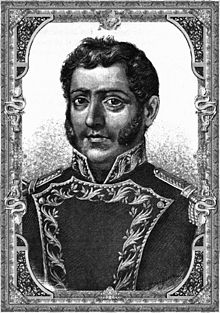Melchor Díaz facts for kids
Melchor Díaz was an early Spanish explorer who traveled through western North America. He was known as a very skilled leader and organizer. People trusted him, and he always kept his team working hard and in good order. He died in January 1541.
Contents
First Journey: Chasing Gold
In 1539, Melchor Díaz was in charge of a town called San Miguel de Culiacán. At that time, a friar named Marcos de Niza returned from his travels. He claimed to have seen the amazing "cities of gold," also known as Cibola.
The viceroy, Antonio de Mendoza, wanted to know if these stories were true. So, he sent Melchor Díaz on a small trip. Díaz's job was to find out if Fray Marcos's reports were real. The information he gathered would help a much bigger expedition led by Francisco Vázquez de Coronado. Díaz started his journey on November 17, 1539.
Joining Coronado's Big Adventure
Coronado's main expedition began in February 1540. Melchor Díaz was supposed to return before then, but he didn't. So, Coronado started without him. Luckily, Díaz and Coronado met along the way, and Díaz joined Coronado's large group.
Coronado then sent Díaz on another mission. He wanted Díaz to find and check out some villages that people had mentioned. Díaz found these villages, but he reported that they were not as grand as described. Later, Díaz was sent ahead to find food for the expedition's animals.
Exploring the Colorado River
In July 1540, Díaz was sent on an important task. He had to take Fray Marcos, who was no longer trusted, back to Mexico. Díaz was also told to take over a small outpost called San Geronimo. This outpost was in a valley known as Corazones, which is now Ures, Sonora.
From San Geronimo, Díaz was supposed to try and connect with a fleet of ships led by Hernando de Alarcón. These ships were meant to support Coronado's land journey by sea.
Discovering the "River of Embers"
In September 1540, Díaz began his third big trip. He traveled by land toward the top of the Gulf of California. Near where the Colorado River and Gila River meet today, he learned something important from the local people. They told him that Alarcón's ships had left.
However, Alarcón had left behind some supplies and a message. Díaz found this hidden message. It said that Alarcón had reached that spot with three ships in 1540. He had been looking for Coronado but had to leave because worms were damaging his ships.
Díaz then crossed the Colorado River. This made him the first European to do so. He named it "Rio del Tizon," which means "River of Embers" or "Firebrand River." He gave it this name because the native people there used embers to keep warm. Díaz was very impressed by how strong the local people were. He explored west of the Colorado River for four days, possibly reaching the Imperial Valley.
Melchor Díaz's Legacy
Sadly, Melchor Díaz suffered a terrible accident during this expedition. Reports say he threw a spear at a dog that was attacking their sheep. The spear stuck in the ground, and before he could stop, Díaz accidentally fell onto the back end of the spear. He was badly hurt.
Díaz suffered for twenty days but died in January 1541 while on the way back. Because of his early death, he didn't write detailed memoirs like other explorers. However, the reports he sent during his journeys were very detailed. They taught a lot about the area and the people living there.
For nearly 200 years, the name he gave the Colorado River, "Rio del Tizon," was the official name. He also wrote about the culture of the Native American people he met. He even discovered and reported on geothermal hot springs, which were probably the ones near Calexico.
See also
 In Spanish: Melchor Díaz para niños
In Spanish: Melchor Díaz para niños


